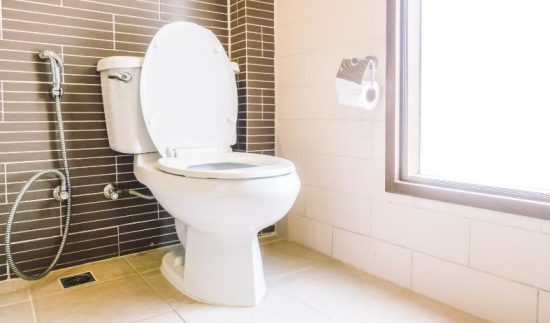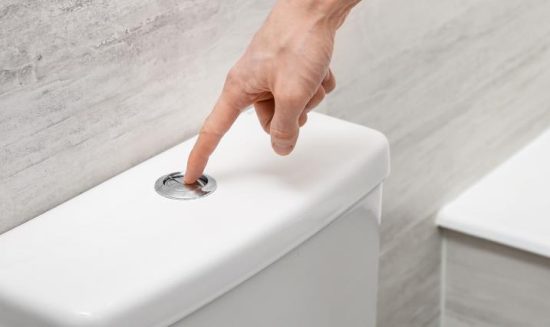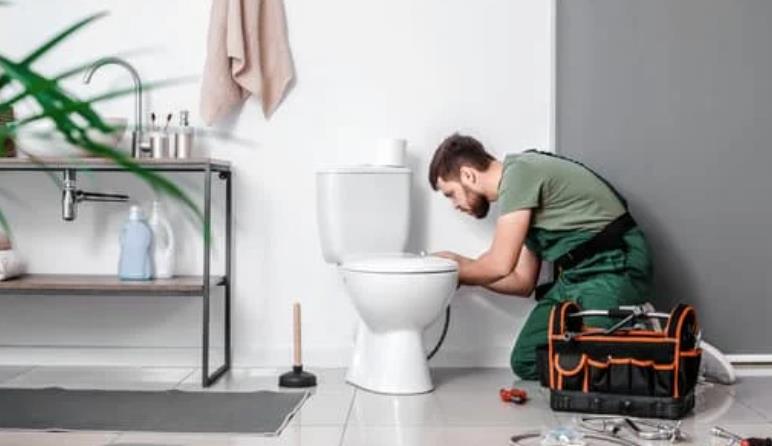A running toilet can be more than just an irritation; it can result in significant water waste and high utility bills. Fortunately, professional plumbing knowledge is not needed to solve this typical home issue. This blog will help you to understand seven easy methods to effectively restore the functionality of your toilet. After reading this tutorial, I realized that fixing a running toilet will seem less complicated. Homeowners who want to save money and conserve water must know how to handle this issue. Now, let’s explore the typical causes, appropriate safety measures, and the actions required for how to fix a running toilet successfully.
Reasons for Toilet Running

You must first understand why your toilet keeps running after flushing for the proper fix. Several things could be the cause, including a malfunctioning flapper, a float that has been adjusted incorrectly, a leak in the toilet tank, or an issue with the refill tube. Because they prevent the tank’s proper filling, each of these problems has the chance to keep the toilet running non stop. Finding the right cause is the first stage in finding a solution. Regular examinations are a good practice because wear and tear can also deteriorate these components over time. Once the precise issue has been identified, you can assemble the necessary equipment and parts.
Do We Have to Call a Professional Plumber?
While some home repairs require professional assistance, most homeowners can fix a running toilet themselves. Accurately detecting the problem and having the necessary tools on hand are crucial. It is best to seek professional assistance for more complicated issues, including internal leakage, or if you encounter complications while repairing the item. However, a do-it-yourself solution is quite viable for common running toilet problems. This improves your knowledge of fundamental house maintenance while also saving you money. Ultimately, how comfortable you are with the situation and how complicated the issue is will determine whether or not you should call a plumber.
Safety Precautions
Before beginning any repair work, taking the appropriate safety precautions is critical. First, turn off the water supply to the toilet to prevent unintentional overflow. Usually, to achieve this, turn the valve behind or at the toilet’s base. To avoid slips and falls, keep your workspace dry. You should also wear rubber gloves to shield your hands from common bacteria and germs prevalent in and around restrooms. To avoid damaging plumbing fixtures, do not apply excessive force. To see what you are working on clearly, ensure you have a good light source. Taking these safety measures will guarantee a successful and secure repair procedure.
Tools Required

To tackle the task of repairing a running toilet, you will need a few essential tools:
- Adjustable wrench
- Screwdriver
- Replacement parts (such as a new flapper or valve, depending on the issue)
- A small cup or container for draining
- Towels or a sponge for cleanup
Having these tools ready before you begin the repair will help streamline the process and prevent unnecessary interruptions. Ensuring you have the correct replacement parts before you start can save time and multiple trips to the hardware store. A little preparation goes a long way in making the repair quicker and more effective.
How to Fix a Running Toilet? – 7 Easy Steps
1. Turn Off the Water
Turning off the water supply is crucial before beginning any toilet repairs to prevent overflows and water waste. First, find the water valve, which usually lies right behind or at the toilet’s base. Make sure the water supply to the bathroom is totally stopped by carefully turning this valve clockwise until it can no longer turn. Once the valve has been turned off, quickly check to ensure the water is turned off by trying to flush the toilet.
You may proceed with your repairs if the bathroom has been successfully separated and no water leaks into the bowl during the test. As you work on the toilet, ensure the valve is entirely closed to prevent potential problems. This step is fundamental as working with the water off prevents interruptions and provides a dry environment for replacing internal components. Double-checking that the water remains off throughout your repair will help maintain a clean and controlled workspace.
2. Check the Flapper
The flapper is frequently identified as the primary source of trouble in a running toilet. To prevent damage, begin by carefully removing the tank lid and placing it aside in a safe place. When the lid is off, locate the flapper at the bottom of the tank. It is usually made of silicone or rubber and lies directly above the drain hole. Keep an eye out for wear signs on the flapper, such as cracks, warping, or overall deterioration, as these flaws can affect the flapper’s ability to form a tight seal.
The running water problem will persist if the flapper is worn out or damaged, allowing water to flow into the bowl from the tank constantly. Flappers are reasonably priced and widely available at hardware stores, making this a cost-effective repair. When purchasing a new flapper, you must bring the old one to compare and ensure you select a compatible replacement. Replacing a faulty flapper is a straightforward task that can significantly improve your toilet’s efficiency, preventing unnecessary water waste.
3. Fix a Running Toilet With a Ball Float
Your toilet tank’s float mechanism is essential for managing the water level. The water level will have chances to rise above the overflow tube if it is incorrectly adjusted or set too high, resulting in continuous drainage and a running toilet. The float will be found in the tank; it may appear as a ball float attached to a horizontal arm or as a cup-shaped float sliding a vertical shaft. Find the adjustment screw or clip on the float assembly to change the water level.
To lower the ball and, subsequently, the water level if you have a ball float, twist the screw on the arm. Move the clip down the column to lower the height at which a cup float closes the fill valve. Aim to set the float so the water stops filling about an inch below the overflow tube’s top. Correct float adjustment prevents excess water flow and ensures efficient tank refilling, which is crucial for stopping your toilet from running continuously.
4. Inspect the Fill Tube
The fill tube ensures that the toilet refills properly after each flush. Water should not go straight into the overflow tube; instead, it should channel into the overflow pipe, which aids in refilling the bowl. Begin your inspection by locating the fill tube, usually a tiny, flexible hose connected to the fill valve. Verify that the overflow tube is firmly attached to the fill valve and that the water flow is directed into the overflow pipe rather than down the overflow tube. Replace the fill tube securely or reposition it if you find it loose or slipping from its proper location.
Make sure it’s firmly clipped to the edge of the overflow tube, if applicable. Correct positioning of the fill tube is essential to avoid misdirecting water, which can lead to continuous running or inefficient flushing. Ensuring the fill tube is correctly installed and secure will help maintain the overall functionality of your toilet’s flushing system and prevent water wastage.
5. Replace the Fill Valve

If the continuous running of your toilet persists even after adjusting the float, the next step is to consider replacing the fill valve. Begin by shutting off the water supply to ensure no water flows into the tank during the repair. Flush the toilet to drain all the balance water from the tank, making it easier to access and replace the toilet valve. Once the tank is empty, stop the water supply line connected to the bottom of the fill valve; this is usually secured with a coupling nut that can be loosened with an adjustable wrench.
Carefully remove the old fill valve by unscrewing any fasteners that hold it in place. Take the new fill valve and insert it into the same position, ensuring it’s aligned correctly according to the toilet tank’s configuration. Secure the new valve by tightening any screws or nuts and reconnect the water supply line, ensuring it’s not cross-threaded to avoid leaks. Finally, adjust the new fill valve per the manufacturer’s instructions, setting it to cut off at the appropriate water level in the tank, thus ensuring efficient and proper operation.
6. Test the Toilet
Once the repairs or modifications are finished, confirming that the toilet functions correctly is essential. Restarting the toilet’s water supply is the first step. Give the tank time to fill fully; this could take several minutes. After filling the tank to the brim, flush the toilet to see how well the new components or settings work. Listen carefully to the flushing mechanism’s sound throughout this test and any odd noises that might point to a problem.
Please verify that the toilet flushes cleanly and that the tank refills to the proper water level before stopping abruptly to prevent overflow or continued operation. If you notice that the toilet continues to run or the flush is not performing as expected, revisit your adjustments and check the installations for any misalignments or loose connections that might be causing the issue. This step is crucial in ensuring that all your efforts have successfully fixed the problem and that the toilet operates efficiently, saving water and reducing the potential for future repairs.
7. Double-check for Leaks
The last but equally important stage in any toilet repair is to make sure there are no leaks. Examine the region visually surrounding the toilet’s base where it touches the floor first. Feel these places with your hands for any moisture indicating a leak. Also, inspect the connection between the toilet tank and the bowl, as leaks frequently occur if the seals are tight enough. Drop two or three drops of food coloring into the water in the tank and check after a few minutes to see if the color emerges in the bowl without flushing.
This is an excellent way to find less noticeable leaks. During these inspections, if any leaks are found, you should replace some seals or tighten the connections more firmly. It’s essential to address any leaks immediately to prevent water damage and ensure the toilet operates efficiently. After adjustments, wipe down all areas to remove moisture and conduct a final check to confirm that all repairs hold and the toilet is leak-free.
FAQs on how to fix a running toilet
What causes a toilet to keep running?
A running toilet can be happened by several issues, including a faulty flapper, an improperly set float, a malfunctioning fill valve, or leaks between the tank and the bowl. Identifying the specific problem is essential for effective repairs.
How do I know if my toilet flapper needs replacing?
Check for signs of wear, like cracks, warping, or decay, on the flapper. If the flapper doesn’t create a complete seal around the drain hole, it’s likely time to replace it. A simple test is to add two drops of food color into the toilet tank; if the color is leaking into the bowl without flushing, the flapper may be at fault.
Can a running toilet increase my water bill?
Yes, a running toilet can waste significant water, leading to higher water bills. Fixing a running toilet promptly can help you save water and reduce monthly expenses.
Do I need special tools to fix a running toilet?
The essential tools required include an adjustable wrench, a screwdriver, and possibly replacement parts like a new flapper or fill valve. These tools are easily available at most hardware stores.
How often should I check my toilet to prevent running issues?
Inspecting your toilet’s internal components at least once a year is good practice. Regular checks can help catch issues before they lead to a continuously running toilet.

